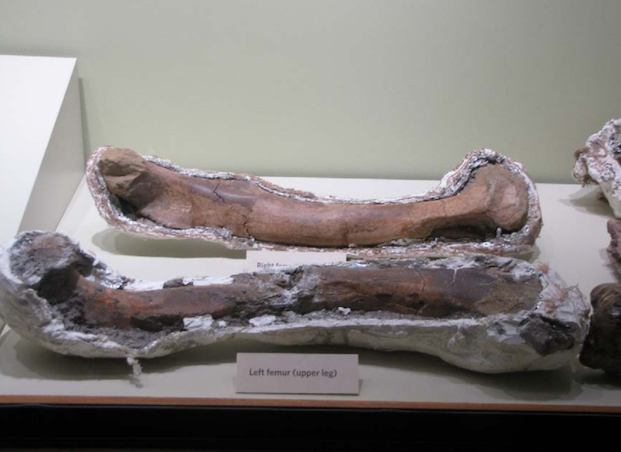Baby Tyrannosaurus Rex Fossil Goes on eBay for $2.95M, Sparks Outrage

It’s astonishing what you can buy on eBay. An ongoing auction on the site offers buyers the chance to own what is claimed to be “maybe the only” juvenile Tyrannosaurus rex ever discovered for a whopping $2.95 million. Paleontologists have condemned the sale for boosting the price of scientifically valuable specimens, and also because a scientific institution—the University of Kansas (KU) Natural History Museum in Lawrence—displayed and promoted the specimen for more than a year.
The museum’s actions, which allegedly include studying the skeleton, may have inadvertently helped raise its commercial value, according to an open letter from the Society of Vertebrate Paleontology (SVP) in Bethesda, Maryland. A high price makes it less likely the fossil will be donated to a public collection, which means it may be effectively lost to science.
The 68-million-year-old skeleton—nicknamed Son of Sampson—was unearthed in 2013 on private land in Montana. Alan Detrich, who made the discovery with his brother, then approached the KU Natural History Museum with a proposal to loan the specimen.

Son of Sampson went on display at the museum in late 2017. According to Detrich, paleontologists connected with the museum then began to study it. Analysis of Son of Sampson’s limb proportions might inform the debate over whether small tyrannosaurs from North America are simply T. rex juveniles or should be recognized as a distinct group named Nanotyrannus.
But paleontologists argue any research is of dubious merit unless the bones are permanently in a public repository and available for other scientists to study. “The issue here is reproducibility in science,” says Thomas Carr, a paleontologist who studies the growth of tyrannosaurs at Carthage College in Kenosha, Wisconsin.
He says his research is crippled by the fact that dozens of known T. rex skeletons are housed in private collections or commercial stock rooms. “There are about 34 specimens I’m aware of that I just cannot study,” he says.
David Polly, a paleontologist at Indiana University in Bloomington and a former president of SVP says displaying and examining Son of Sampson boosted awareness and interest in the specimen, with the museum display case effectively acting as a shop window. He argues that the museum’s actions could be interpreted as scientifically endorsing the specimen’s worth and calls the exhibition “a lapse of judgment.”
Leonard Krishtalka, the museum’s director, said in a statement that the museum “does not sell or mediate the sale of specimens to private individuals” and that the juvenile T. rex has been removed from exhibit and will be returned to Detrich. Krishtalka says he is unable to discuss the matter further because of legal concerns.

Detrich regrets his decision to launch the eBay auction without first informing the museum. “It could have been handled a lot better, and I take full responsibility,” he says. But he adds that no laws prevent private owners from selling their fossils, whether on eBay or elsewhere, or displaying their specimens in museums. (Detrich also produces religious artworks from fragments of fossils, some of which can be viewed on his website, spearofjesus.com).
Polly says SVP is all too aware that no laws block such sales or displays. He notes that another privately owned T. rex specimen is now on exhibit at the Natural History Museum in Berlin. That specimen has gained fame and earned its scientific stripes from being displayed, he says, also possibly raising its value.
It might be too late to save Son of Sampson for science, and Carr mourns the loss. But he says this particular specimen, which appears to be an incomplete skeleton with a shattered skull, may not be the best, despite Detrich’s claims that it is the only known juvenile T. rex.
“That’s just spin,” says Carr, who is convinced that all small specimens labeled Nanotyrannus are really T. rex juveniles. He suspects no one will be willing to pay $2.95 million for Son of Sampson. “The asking price is just absurd,” he says.
Source: www.sciencemag.org








